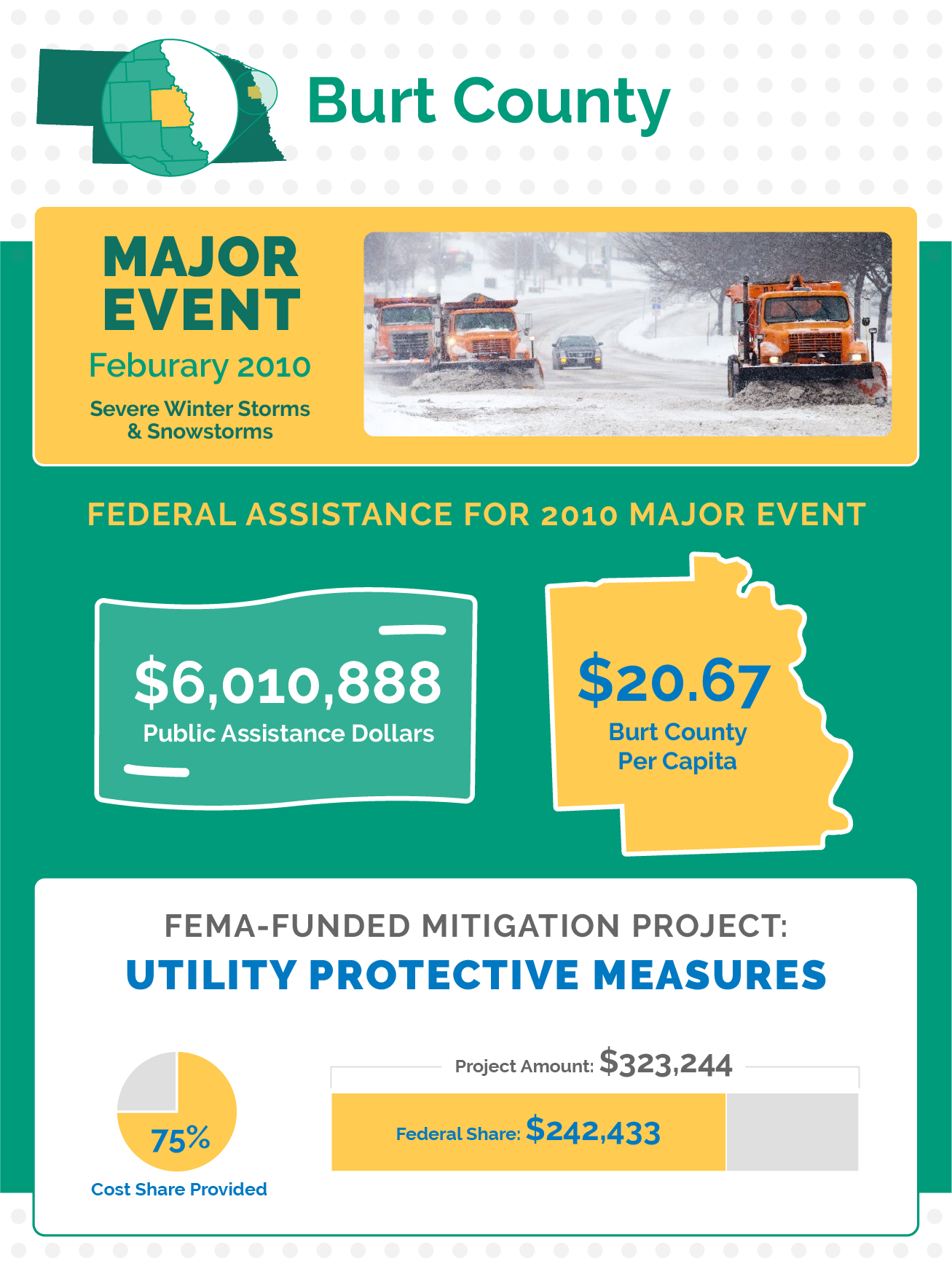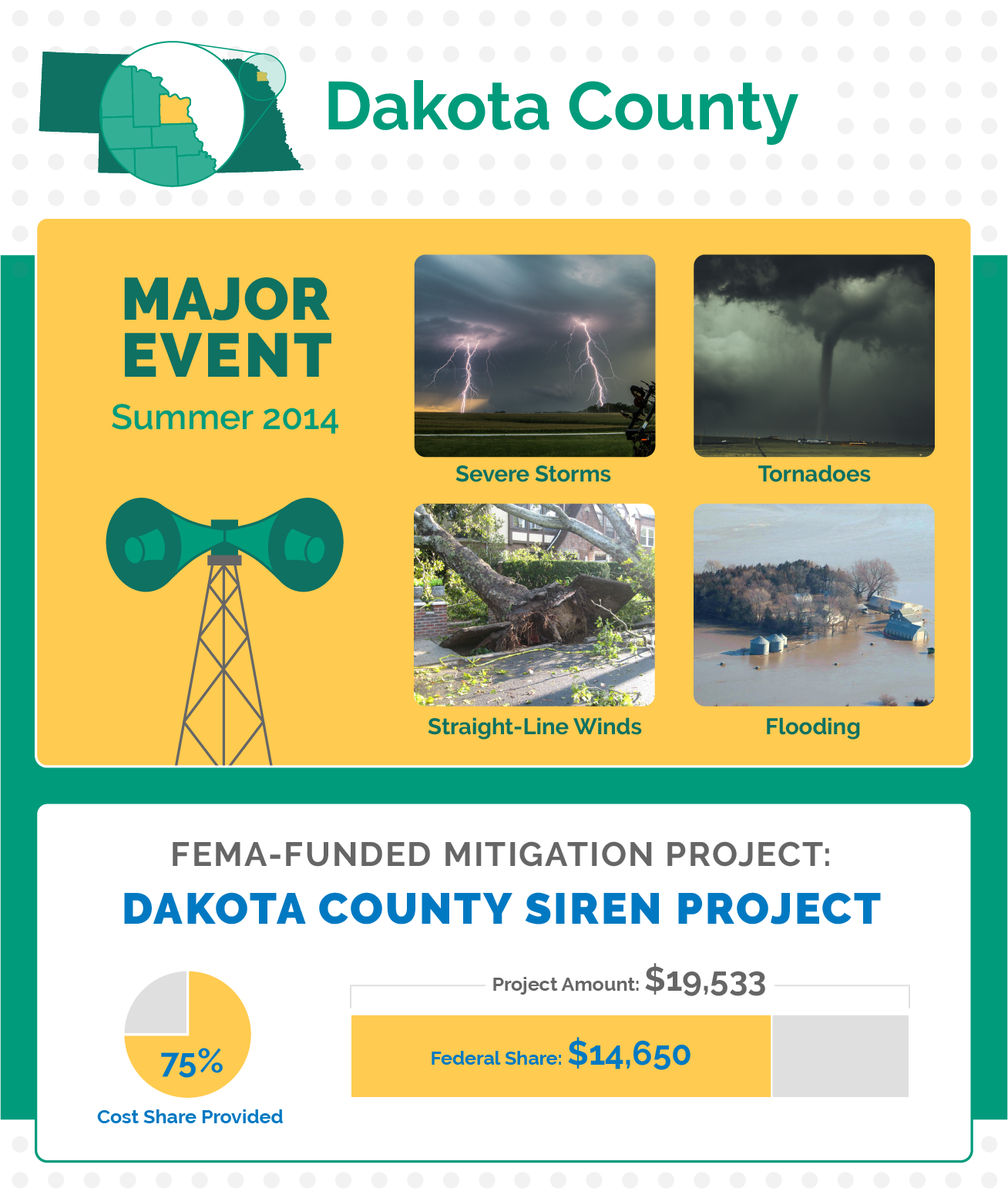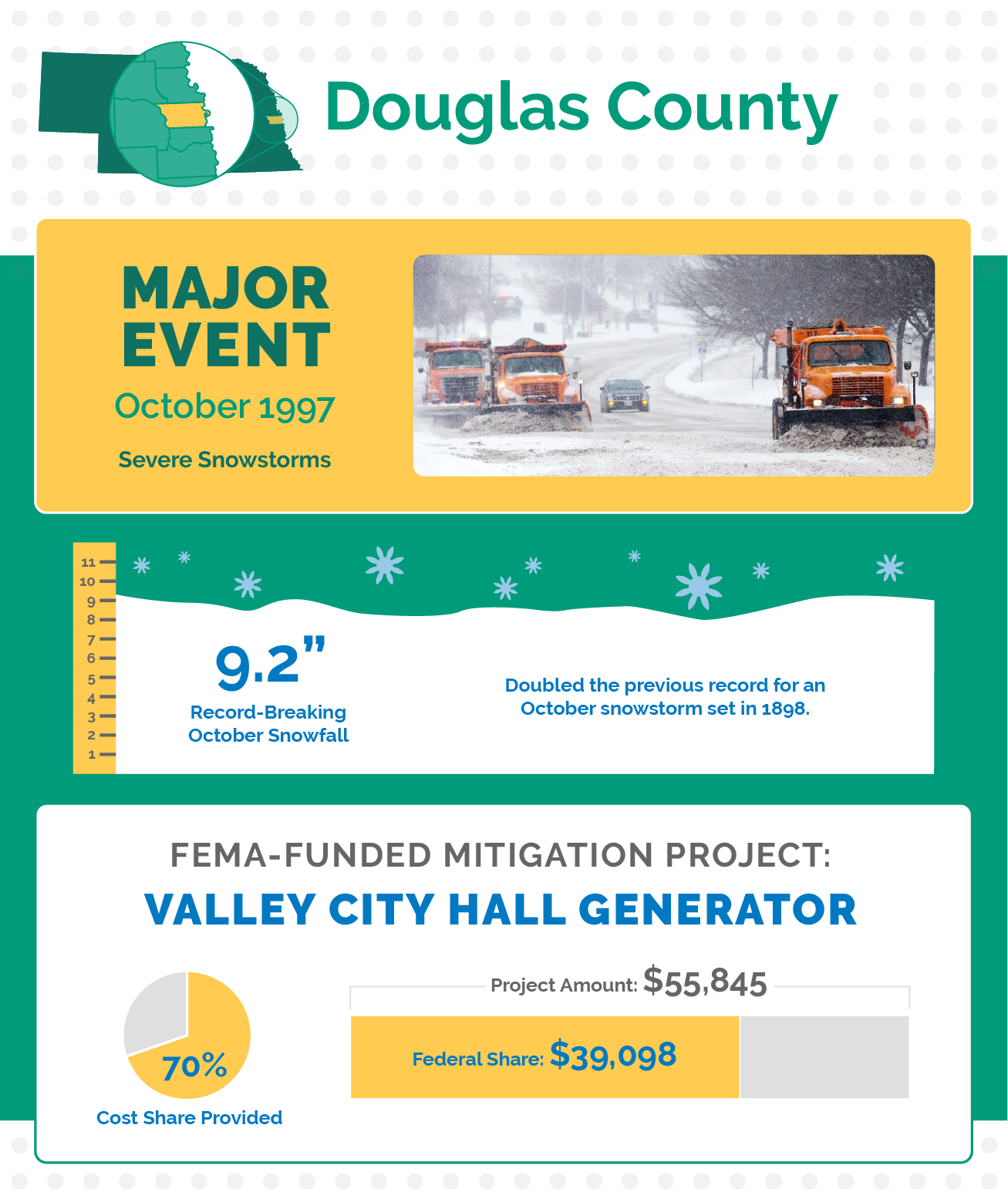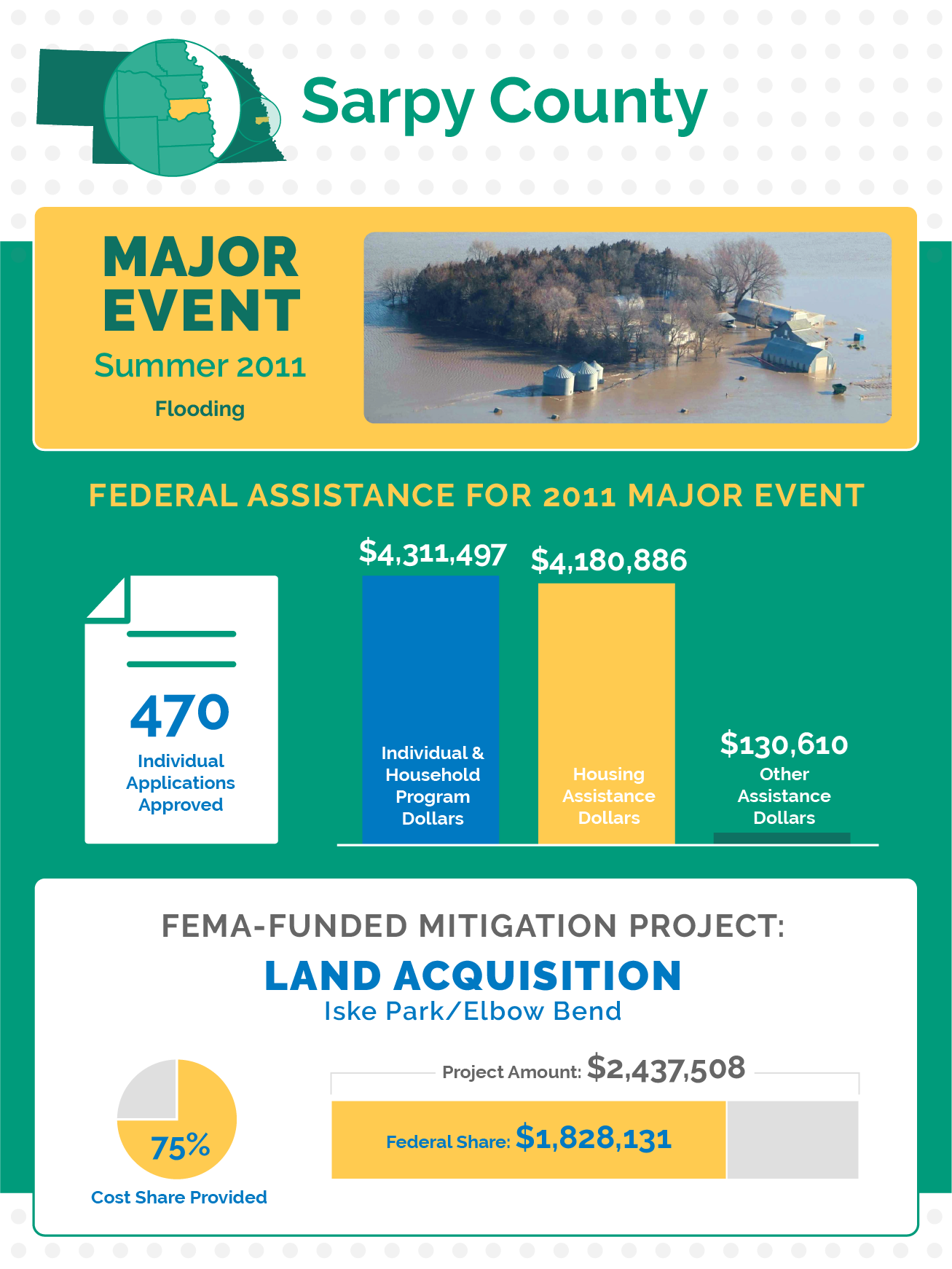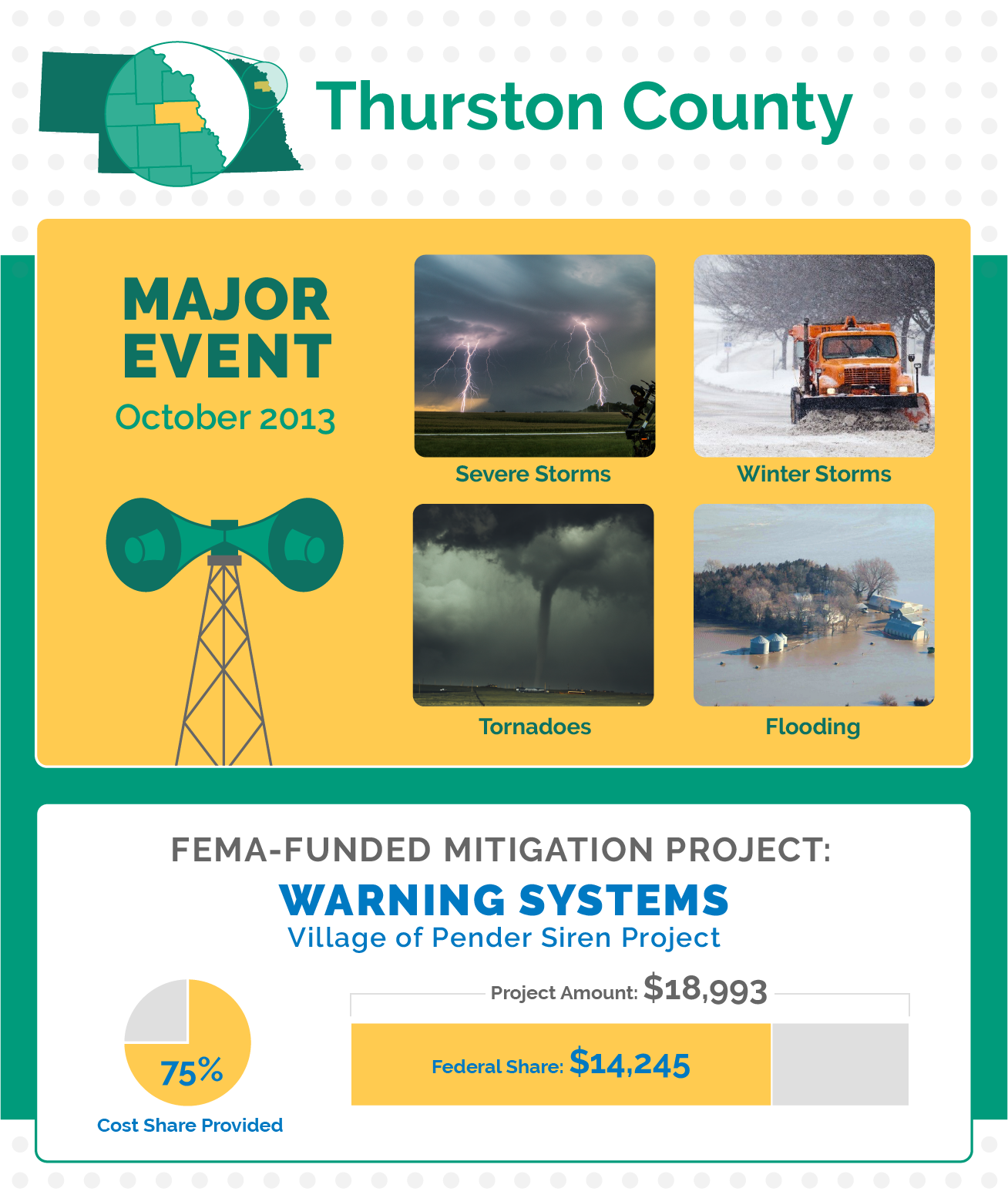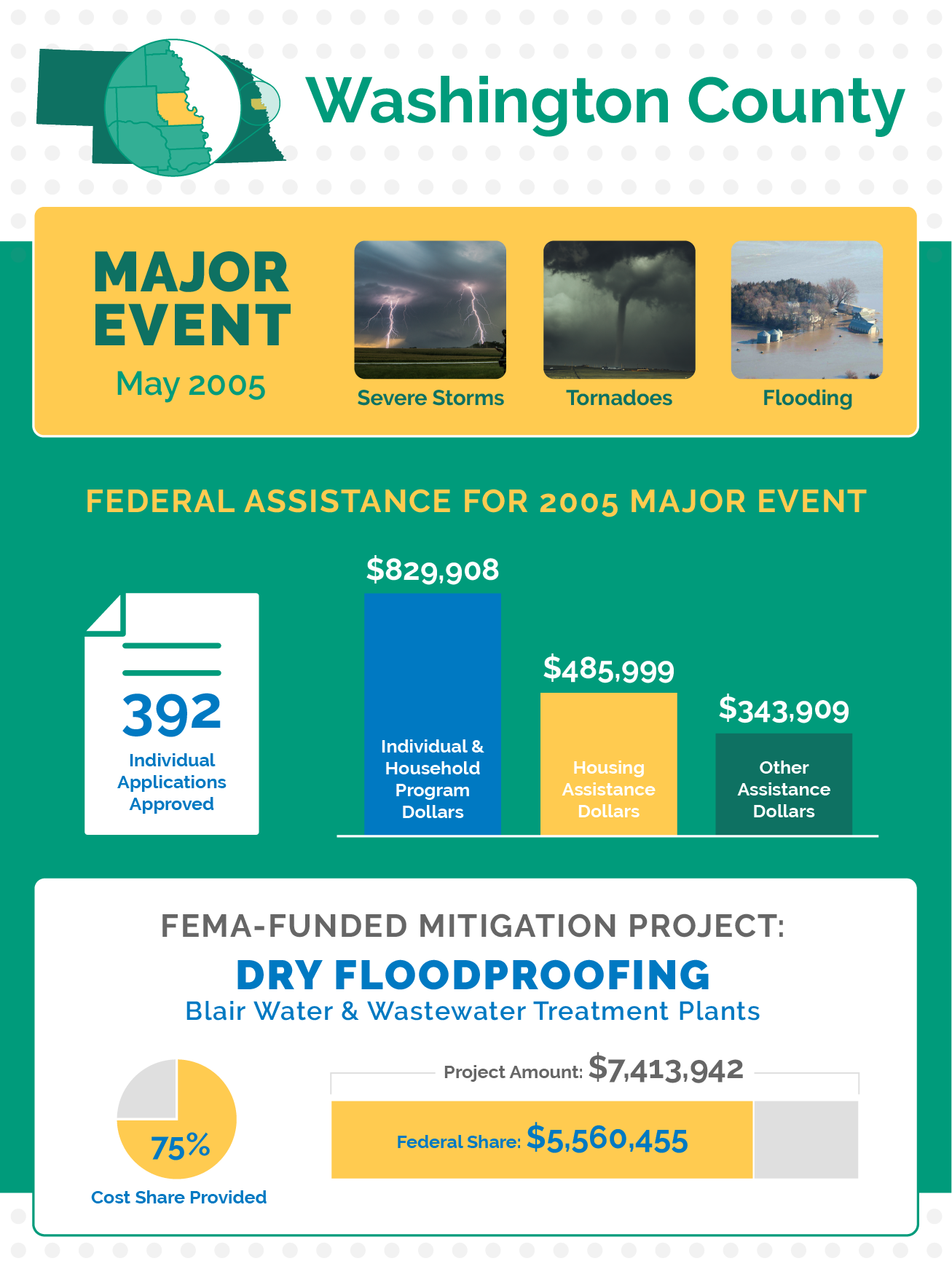Papio-Missouri River NRD Regional Hazard Mitigation Plan
The Papio-Missouri River Natural Resources District (NRD), covering Burt, Dakota, Douglas, Sarpy, Thurston, and Washington Counties, has received approval for their updated Multi-Jurisdictional Hazard Mitigation Plan (HMP) for 2021 from the Nebraska Emergency Management Agency (NEMA) and the Federal Emergency Management Agency (FEMA). This plan is required to be updated and approved by FEMA every five years, with the last version approved in May 2021. All communities are eligible and encouraged to participate in the planning process.
What is a Hazard Mitigation Plan?
An HMP is a community-guided document that assesses vulnerability to natural and human-caused hazards and identifies mitigation projects to reduce or eliminate such risks. An approved HMP is a FEMA requirement for jurisdictions to become eligible for several grant funding options. This approval enables your community to be stronger and more resilient by reducing your community’s risk and impacts from disasters, as well as building partnerships and relationships with stakeholders within your community and region.
This HMP update is funded by a FEMA planning grant that includes 75% federal funding and 25% local match. The Papio-Missouri River NRD is providing the 25% local match.
Why You Should Get Involved
In order to be successful, we need your participation and input on this community-driven HMP. Here are just a few of the reasons why public participation is important during the HMP planning process:
Advance Planning Saves Lives.
According to a 2017 report by the National Institute of Building Sciences (NIBS), implementing hazard mitigation tactics and exceeding building codes together would prevent 600 deaths, 1 million nonfatal injuries, and 4,000 cases of post-traumatic stress disorder in the long term. Community-driven HMPs are proven in saving lives during disasters, which is why it’s imperative communities are involved in the planning process.
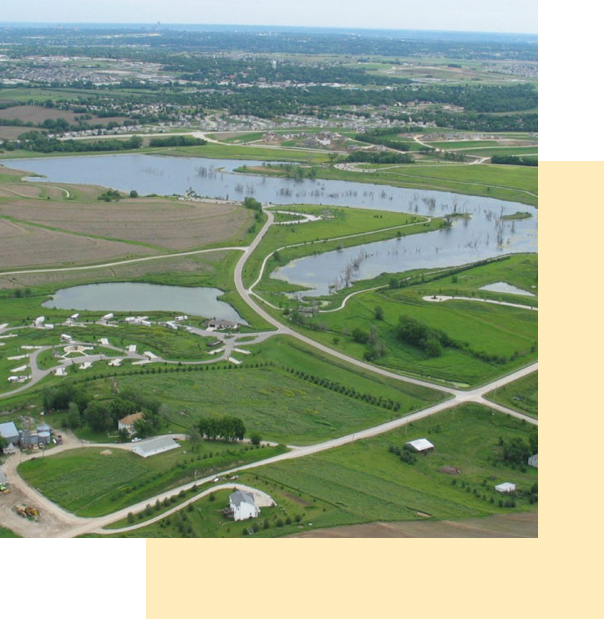
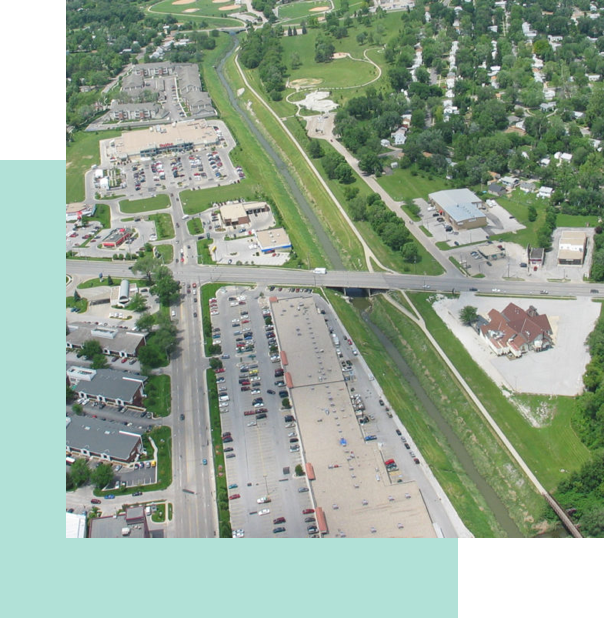
Advance Planning Saves Money.
Based on the same 2017 NIBS report, every $1 spent on hazard mitigation saves $6 on future disaster costs nationally. And as previously mentioned, FEMA-approved HMPs are needed to gain eligibility for federal mitigation grant programs. By planning and preparing for hazards in advance, communities can help increase recovery speed while also decreasing recovery costs.
Advance Planning Brings Communities Together.
Public participation during the HMP process helps determine, evaluate and prioritize local community hazards and vulnerabilities. Through the planning process, local entities can build partnerships to address these risks, create risk reduction tactics, and align these strategies with other community objectives. Knowledge is power – and the more a community knows together, the more prepared and resilient they can be before, during, and after a disaster.
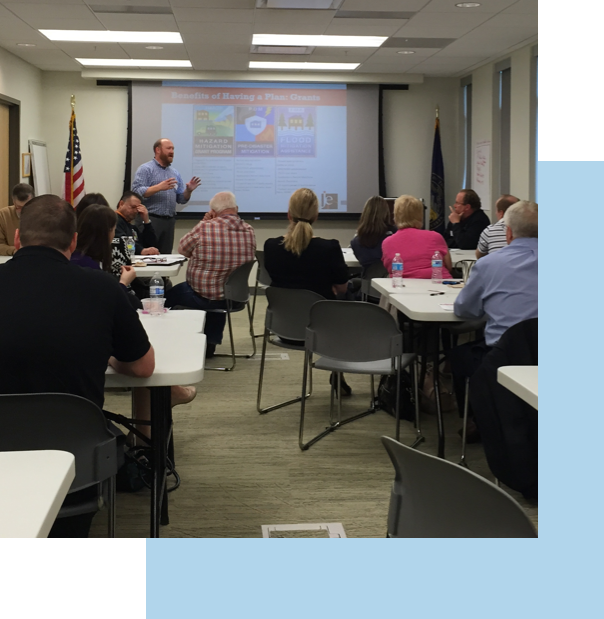
The Planning Process
The Papio-Missouri River NRD planning process included public meetings to allow interested stakeholders and community members to learn more about the plan and provide input on community vulnerabilities and actions to address such concerns.
Meeting Updates and Information
Throughout 2020, the Papio-Missouri River NRD and JEO Consulting Group hosted risk assessment and mitigation strategy meetings to gather input from community members, stakeholders and local officials about the HMP and provide feedback on specific concerns and actions to pursue. Additionally, more than 650 responses were collected from residents within the planning area, representing 20 communities, during the successful Would You Rather? social media campaign.
Public Review Period
The draft 2021 Hazard Mitigation Plan was available for a 30-day Public Review Period to all participating jurisdictions, residents, and community stakeholders. This period ran from Monday, January 4th to Friday, February 5th, 2021.
Approved 2021 Papio-Missouri River Natural Resources District Hazard Mitigation Plan
The Papio-Missouri River NRD HMP has been approved by the Nebraska Emergency Management Agency and the Federal Emergency Management Agency as of May 19, 2021. The final approved plan is available for download below.
Would You Rather?
During the summer of 2020, we asked residents in the Papio-Missouri River NRD Would You Rather? when it comes to different hazards that face our communities every day. As part of this conversation, residents completed a short survey to help identify local hazards, which would then help the NRD and JEO Consulting Group update the 2021 Hazard Mitigation Plan (HMP). More than 650 responses were collected across 20 communities within the planning area, helping to identify community hazards that impact residents the most and allowing the project team to work towards reducing the impact of those hazards. Learn more about past major events and mitigation projects for your county below.

Additional Resources
Check out these resources to learn more about hazard mitigation planning in your area.
Planning Partners

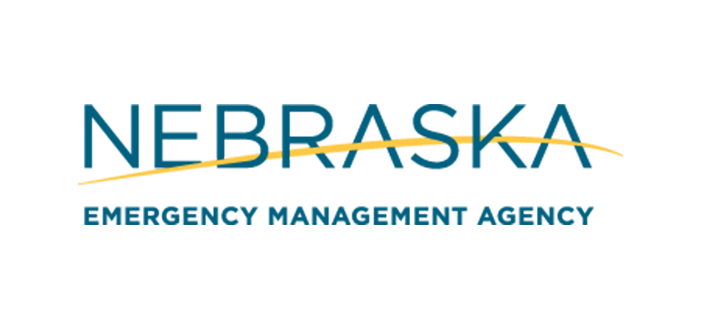

8901 S 154th St, Omaha, NE 68138
(402) 444-6222
© 2020 Papio-Missouri NRD All rights reserved.







